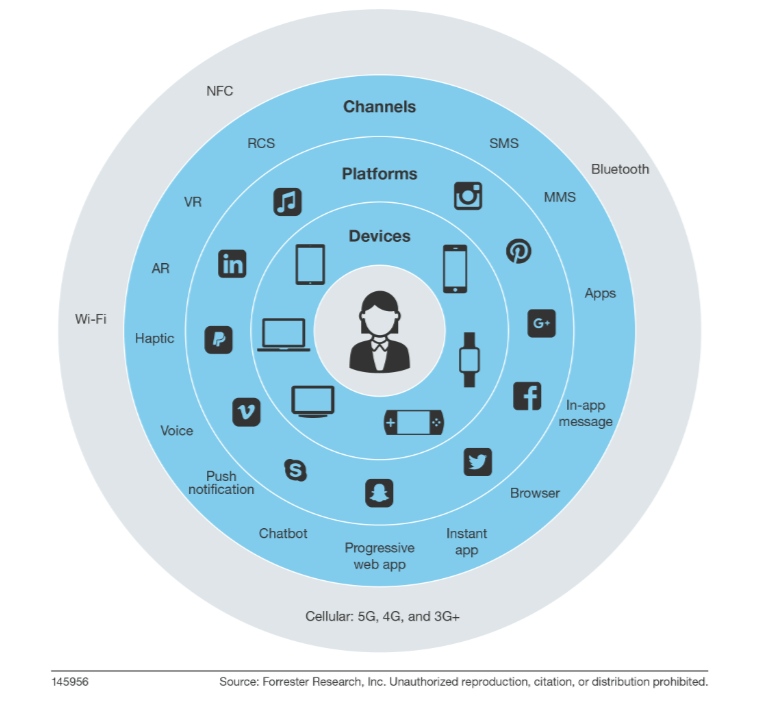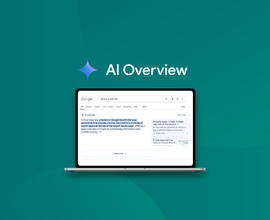What Is a Touchpoint? | Marketing Touchpoints on a Buyer's Journey
Marketing touchpoints are customer interactions with your brand over the course of the buyer journey. Learn more about customer touchpoints across channels.
Marketing today is defined by a complex series of interactions with customers, and today’s savvy customers are all too accustomed to being bombarded by marketing across channels. So how do you provide the right experience for your customers across channels?
Touchpoints.
What Is a Touchpoint?
A touchpoint is any point of interaction with a customer or potential customer at any stage of the customer journey. Digital touchpoints refer to engagements with your brand online, which include your website, ads, search engineSearch Engine
A search engine is a website through which users can search internet content.
Learn more results, social media, and more.
As more and more people turn to their computers and phones to find information, products, and services, understanding the full array of digital touchpoints is more important than ever. For brands that also operate brick-and-mortar stores, integrating digital experiences with on-site touchpoints is also essential.

Retailers in particular have been forced to think about touchpoints in new ways that involve every single point of the customer journey: from marketplaces like Amazon, integrating brick-and-mortar campaigns with digital experiences, and leveraging shipping (cost, timeliness, and returns) as a market differentiator.
The Customer Journey: One Touchpoint at a Time
As you consider the many ways your customers interact with your brand, you also can start building out the customer journey, finding the right content or experience to deliver on the right channel at the right time to the right person.
Building the customer journey means knowing and understanding your customers: their pain points, their challenges, their motivations, and more. It’s a process we call “humanizing marketing ,” in which deep understanding of your customers allows a brand to use marketing to make a positive impact on their lives.
So let’s talk about some of the keyways touchpoints are likely to influence the customer experience.
1. Use Data to Make Your Website Your Most Versatile Touchpoint
I like to make the distinction between “owned” and “rented” digital space: on social media, you have to abide by whatever rules (that change more often and more suddenly than we would probably like) that a network places on your page and interactions. That’s because you are, essentially, renting the space from, say, Facebook.
Your website is a different story. That’s your owned digital property, and that’s why it’s one of the most important parts of your marketing strategy. Obviously, your website contains numerous potential touchpoints: product pages, blog posts, location specific pages. An understanding of your customers is crucial to perfecting your website as the hub of the digital customer experience.
One of the best ways to align your touchpoints is by mapping the customer journey. Start with personas: who are your key customer segments? To understand who they are and how they are likely interact with your brand at key touchpoints, you need to get insights from customer data.
Personalization is one of the biggest trends in marketing right now (and the one that marketing executives feel most unprepared for), but it requires walking a very particular line around customer data. In addition to the new regulations around data privacy, it's important to remember that customers need to be able to trust you with their data. Collecting and processing data must be done transparently, and brands should be leveraging technology to connect their customers to valuable experiences in exchange for the privilege of access to their private data.
2. Map the Customer Journey to Find Crucial Touchpoints
Organic search insights are a key component in understanding how your customers are likely to engage with your brand. What questions are they asking that you can help them answer? What can you share about your brand’s area of expertise? What kind of device are they using?
For enterprise-level companies, that can be an overwhelming amount of information. Use technology to access and organize your insights so you can get the most impact from them.
Next, consider the stages of the customer journey: what is your customer trying to accomplish when they search for specific groups of phrases? Were they trying to purchase a specific black dress or were they just looking for information about the little black dress trend? Understanding search intent is key to this process because it will help you find the right content to deliver at each touchpoint.
Your digital touchpoint strategy should align with your customers’ needs and your business goals, and that might look very different in different markets. Don’t make assumptions about how your customers want to interact with your brand, let what you know about their preferences drive your strategy.
3. Finding the Right Moment: Other Digital Channels
Other key channels that you need to consider include social media, paid search, display ads, and more. All too often, we divide our marketing into paid and earned strategies that can deploy very differently. But the same humanized marketing strategies and considerations you apply to your “earned” interactions like blog posts driving organic traffic should apply to every touchpoint.
If you are buying space on a search engine results page, does the content you’re providing match the search intent of your customer? It needs to; you should not buy space just to have it, but because you are able to provide real value to your customer at that touchpoint.
Similarly, the bevy of social media networks makes it easier than ever to get in front of your customers, but much harder to earn the click. By putting them first, you stand out from the cacophony of businesses screaming in their general direction. By considering their needs and the value you can provide them with, every touchpoint will create a positive interaction and earn something even more important when it comes to the long-term prospects of your brand: customer trust.
4. Beyond Digital Touchpoints: Integrating Brick-and-Mortar Experiences
Increasingly, customers are demanding seamless omnichannel experiences, in which they are able to interact with brands across channels both digital and in person. It's crucial to bring together data from non-digital sources like in-store purchase history that are often isolated to get a whole picture of your customers' interactions with your brand across all channels.
That single customer view (SCV) is the way to bring all of your different touchpoints into one comprehensive view. This is the data equivalent to the fully mapped customer journey. More and more people are shopping online, but they are actually making more purchases in store than online. They are rewarding brands who are getting ahead of the game and expediting the nearly endless series of cross-channel convergences that make up today's buyers' journey.
Making it easier for customers to unlock deals while they are in-store from a mobile device or facilitating in-store delivery for online purchases means your brand will not be cannibalizing its own customers by putting different channels into conflict or competitionCompetition
Businesses generally know who their competitors are on the open market. But are they the same companies you need to fight to get the best placement for your website? Not necessarily!
Learn more. Instead, they provide one cohesive experience for their customers.
With the right blend of technology, data, and people, forward-thinking marketers can provide seamless, personalized brand experiences and connect their customers with the solutions they need at every touchpoint on the customer journey.







